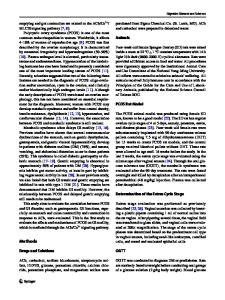Organophosphorus flame retardants are developmental neurotoxicants in a rat primary brainsphere in vitro model
- PDF / 2,993,524 Bytes
- 22 Pages / 595.276 x 790.866 pts Page_size
- 40 Downloads / 344 Views
ORGAN TOXICITY AND MECHANISMS
Organophosphorus flame retardants are developmental neurotoxicants in a rat primary brainsphere in vitro model Helena T. Hogberg1 · Rita de Cássia da Silveira E Sá1,2 · Andre Kleensang1 · Mounir Bouhifd1 · Ozge Cemiloglu Ulker1,3 · Lena Smirnova1 · Mamta Behl4 · Alexandra Maertens1 · Liang Zhao1,5 · Thomas Hartung1,6 Received: 13 July 2020 / Accepted: 2 September 2020 © The Author(s) 2020
Abstract Due to regulatory bans and voluntary substitutions, halogenated polybrominated diphenyl ether (PBDE) flame retardants (FR) are increasingly substituted by mainly organophosphorus FR (OPFR). Leveraging a 3D rat primary neural organotypic in vitro model (rat brainsphere), we compare developmental neurotoxic effects of BDE-47—the most abundant PBDE congener—with four OPFR (isopropylated phenyl phosphate—IPP, triphenyl phosphate—TPHP, isodecyl diphenyl phosphate—IDDP, and tricresyl phosphate (also known as trimethyl phenyl phosphate)—TMPP). Employing mass spectroscopybased metabolomics and transcriptomics, we observe at similar human-relevant non-cytotoxic concentrations (0.1–5 µM) stronger developmental neurotoxic effects by OPFR. This includes toxicity to neurons in the low µM range; all FR decrease the neurotransmitters glutamate and GABA (except BDE-47 and TPHP). Furthermore, n-acetyl aspartate (NAA), considered a neurologic diagnostic molecule, was decreased by all OPFR. At similar concentrations, the FR currently in use decreased plasma membrane dopamine active transporter expression, while BDE-47 did not. Several findings suggest astrogliosis induced by the OPFR, but not BDE-47. At the 5 µM concentrations, the OPFR more than BDE-47 interfered with myelination. An increase of cytokine gene and receptor expressions suggests that exposure to OPFR may induce an inflammatory response. Pathway/category overrepresentation shows disruption in 1) transmission of action potentials, cell–cell signaling, synaptic transmission, receptor signaling, (2) immune response, inflammation, defense response, (3) cell cycle and (4) lipids metabolism and transportation. Taken together, this appears to be a case of regretful substitution with substances not less developmentally neurotoxic in a primary rat 3D model. Keywords Developmental neurotoxicity · Flame retardants · 3D in vitro model · New approach methodologies · Metabolomics · Transcriptomics
Introduction
Electronic supplementary material The online version of this article (https://doi.org/10.1007/s00204-020-02903-2) contains supplementary material, which is available to authorized users. * Helena T. Hogberg [email protected] 1
Center for Alternatives To Animal Testing (CAAT), Johns Hopkins Bloomberg School of Public Health, Baltimore, MD, USA
2
Department of Physiology and Pathology, Federal University of Paraíba, João Pessoa, Brazil
3
Department of Toxicology, Faculty of Pharmacy, Ankara University, Ankara, Turkey
Flame retardants (FR) are a group of compounds, which are added to consumer products, including upholstered furniture
Data Loading...











